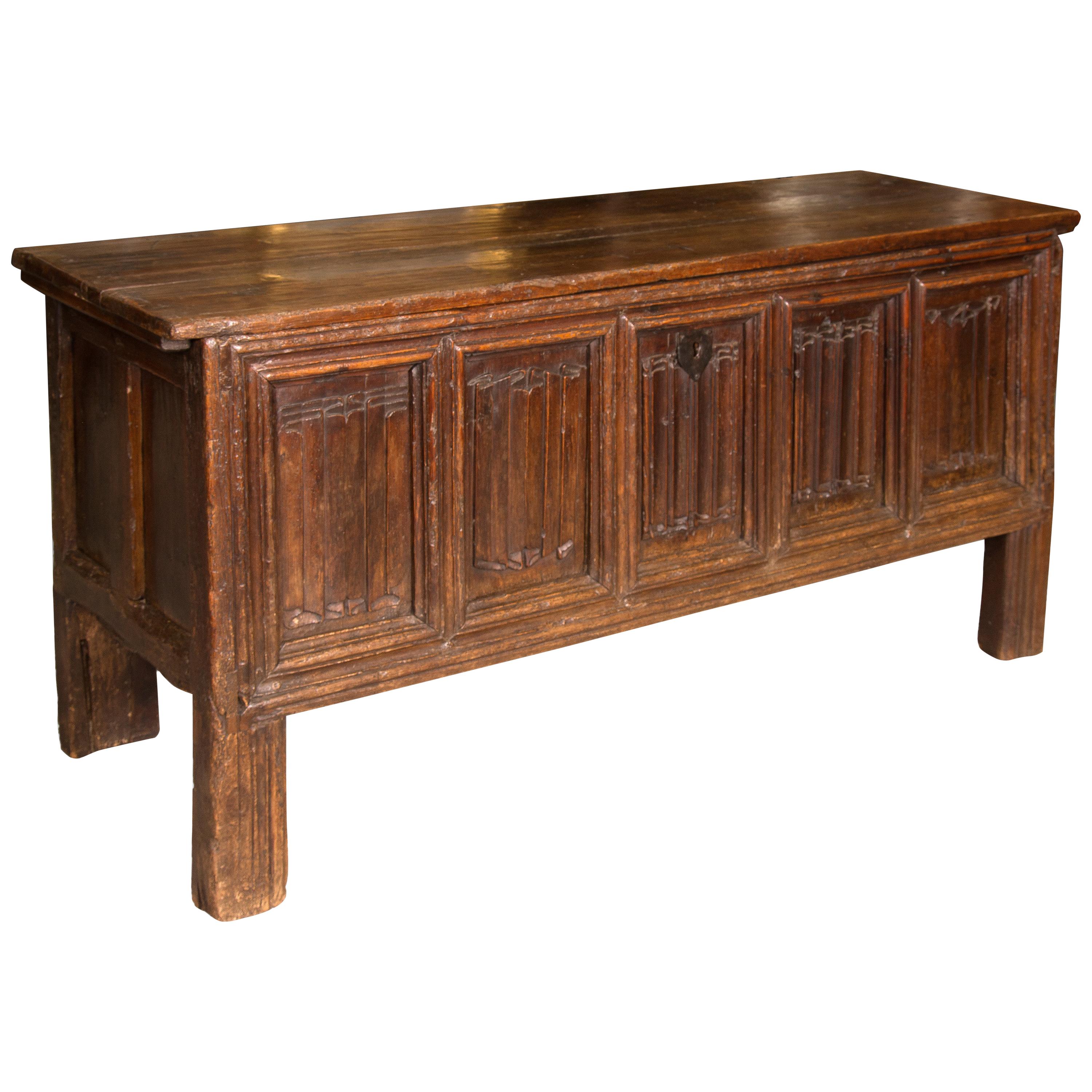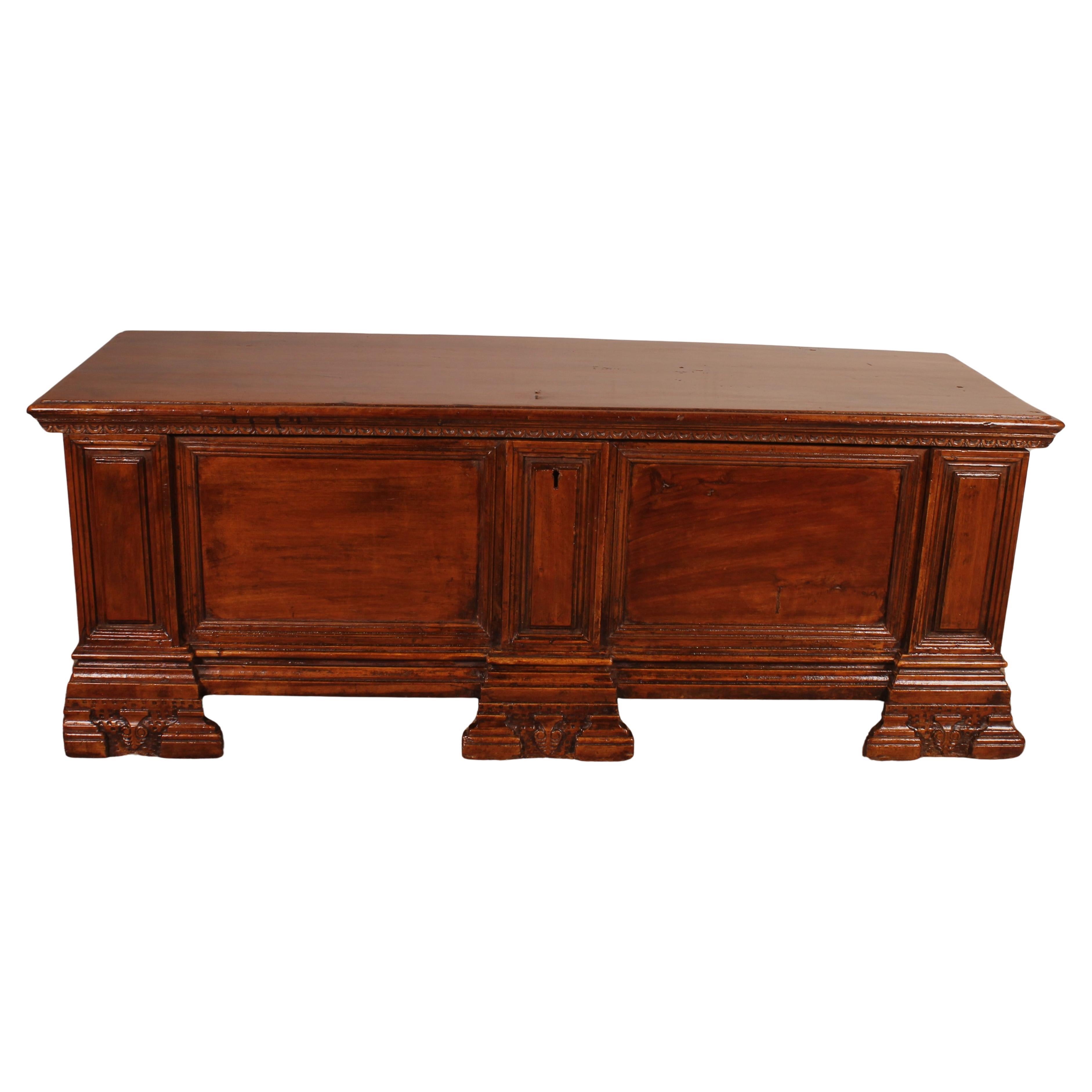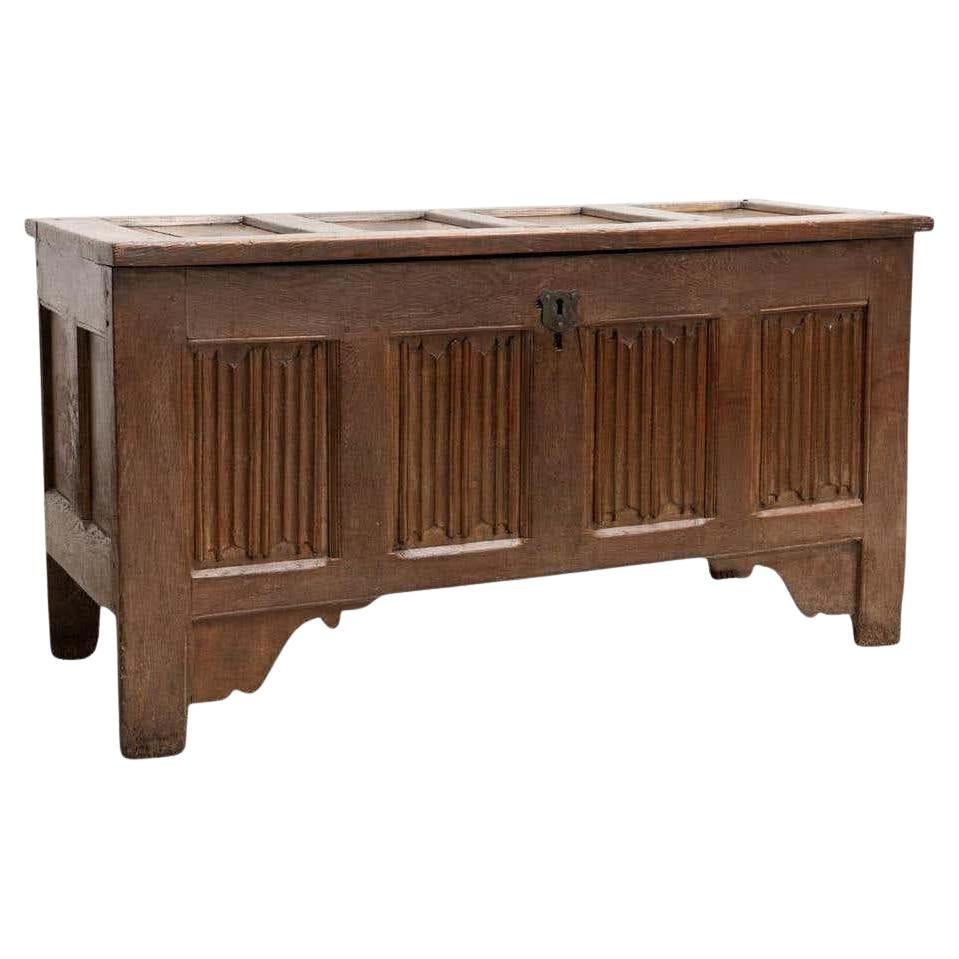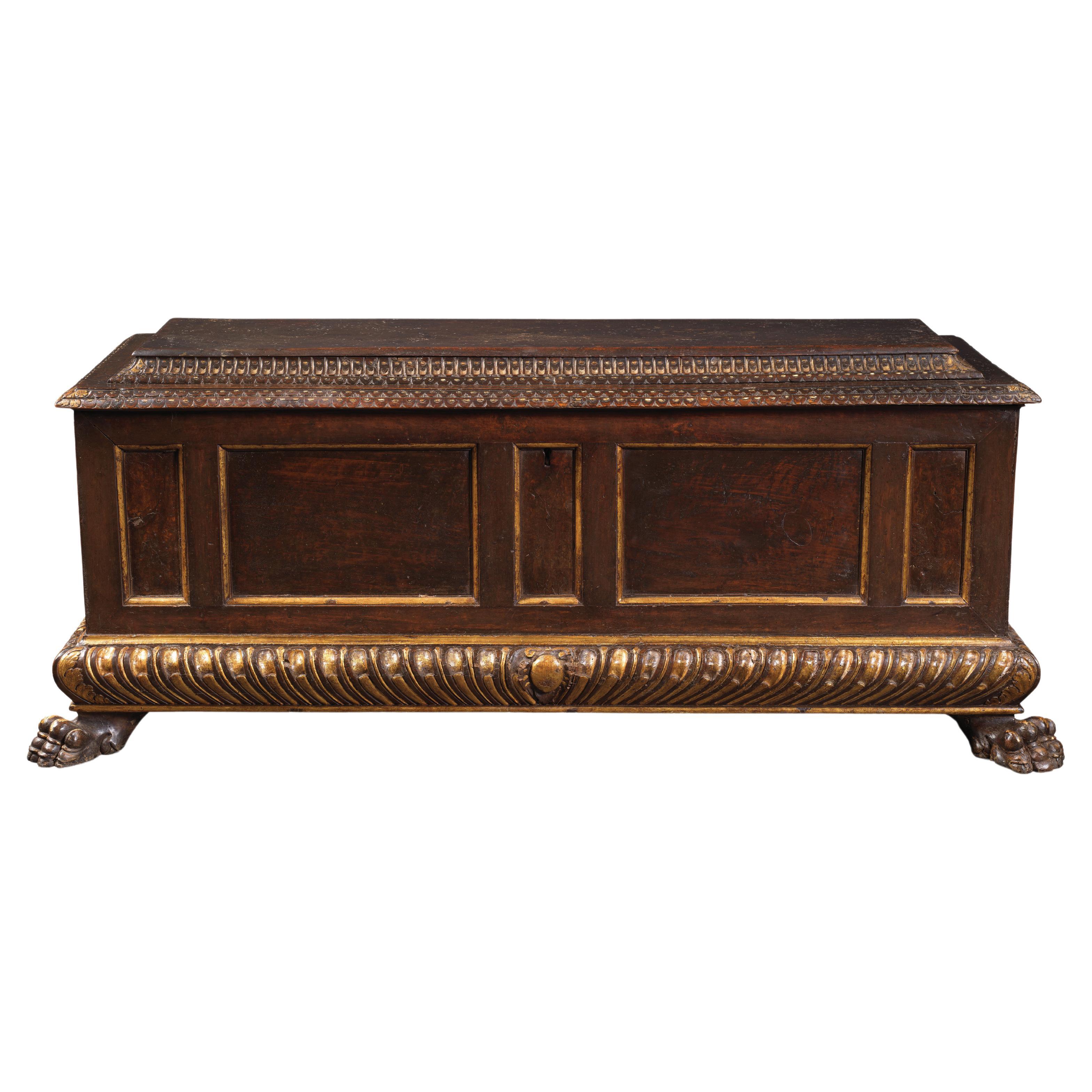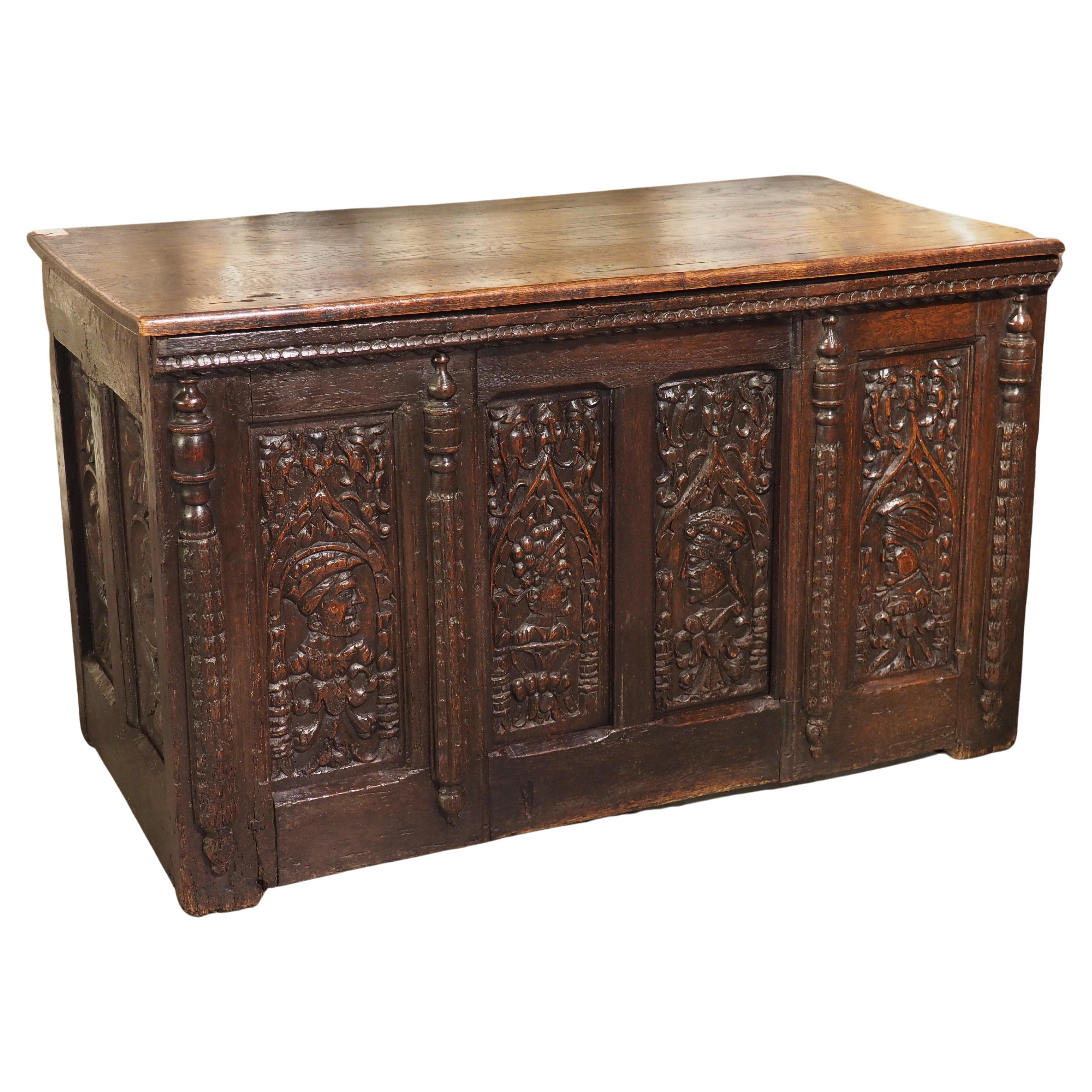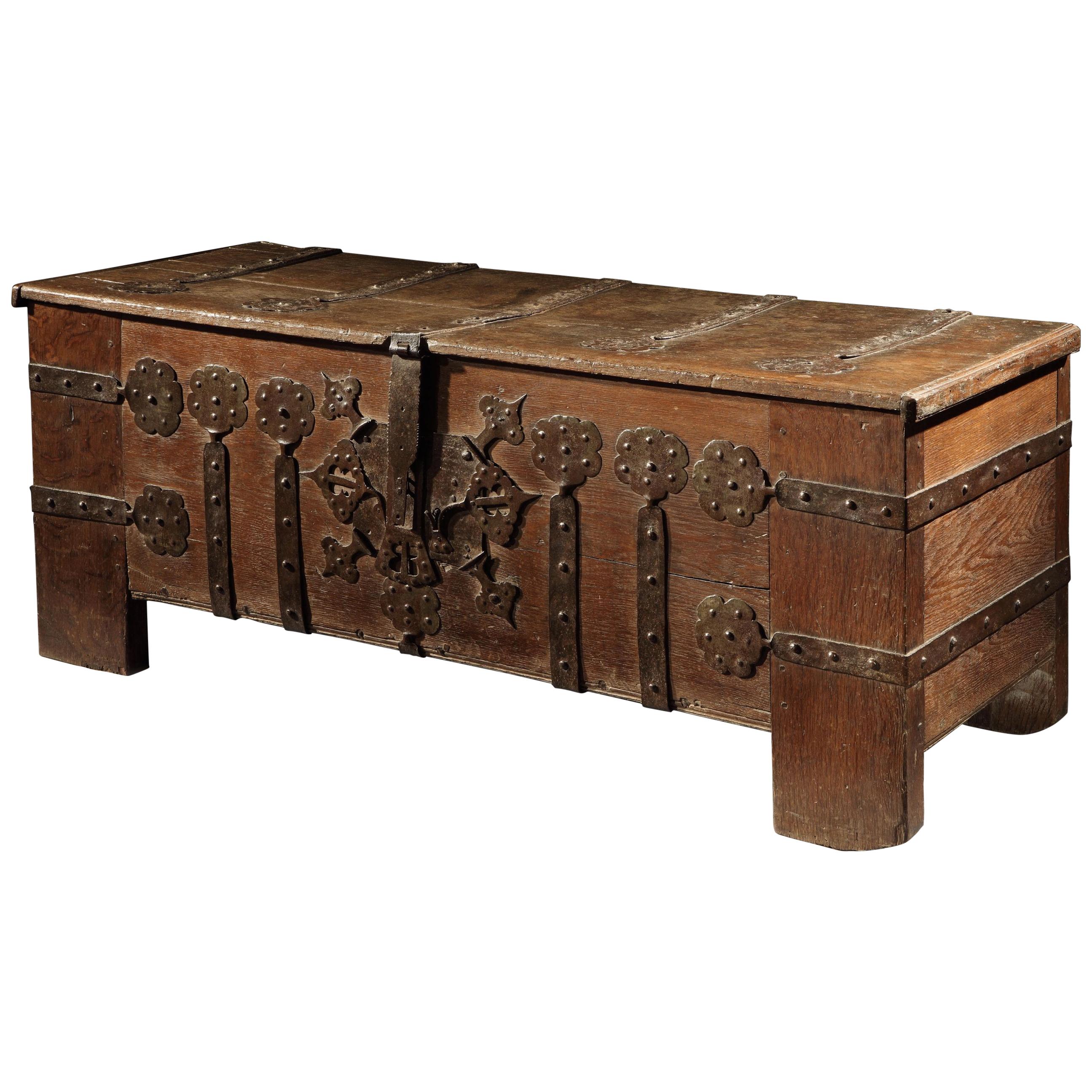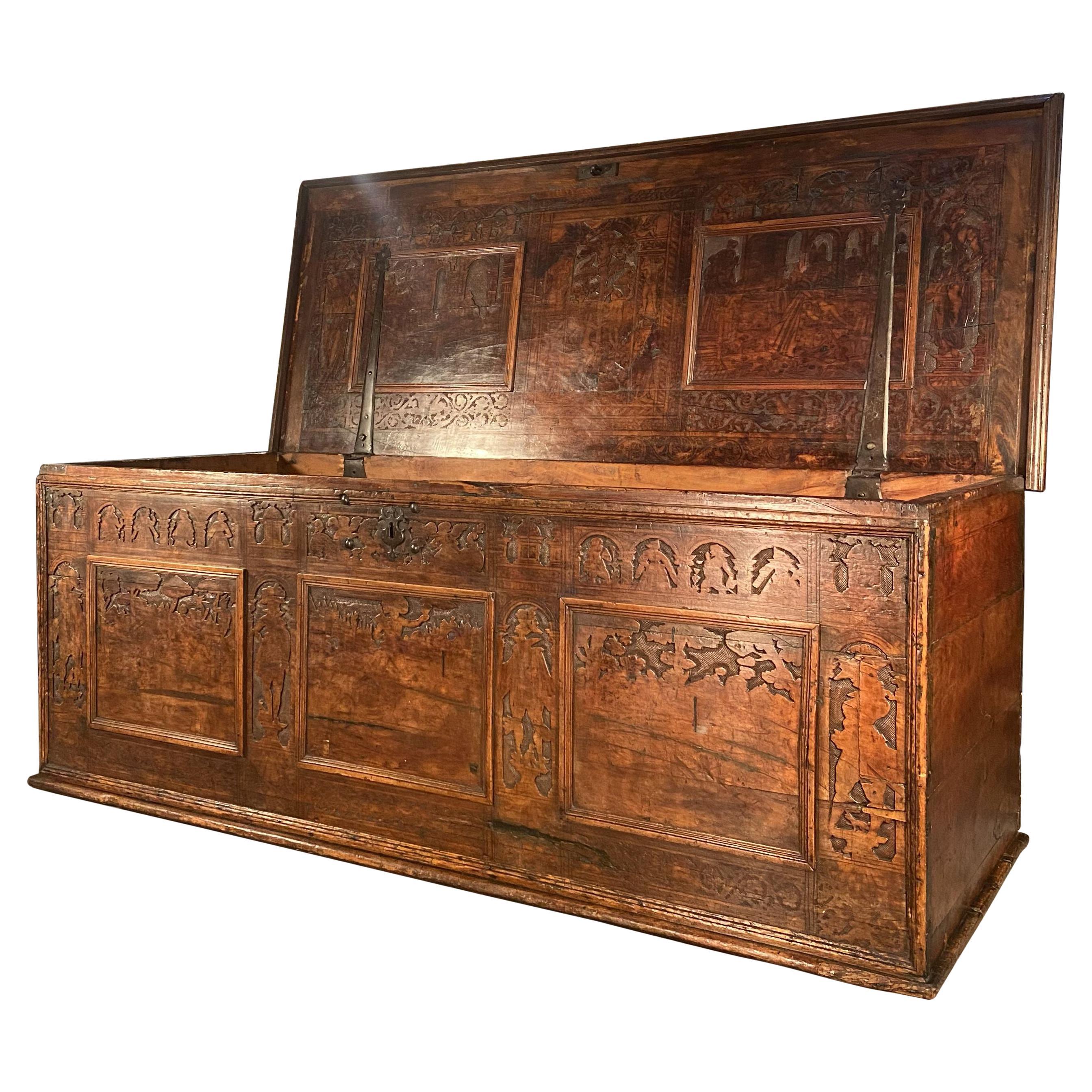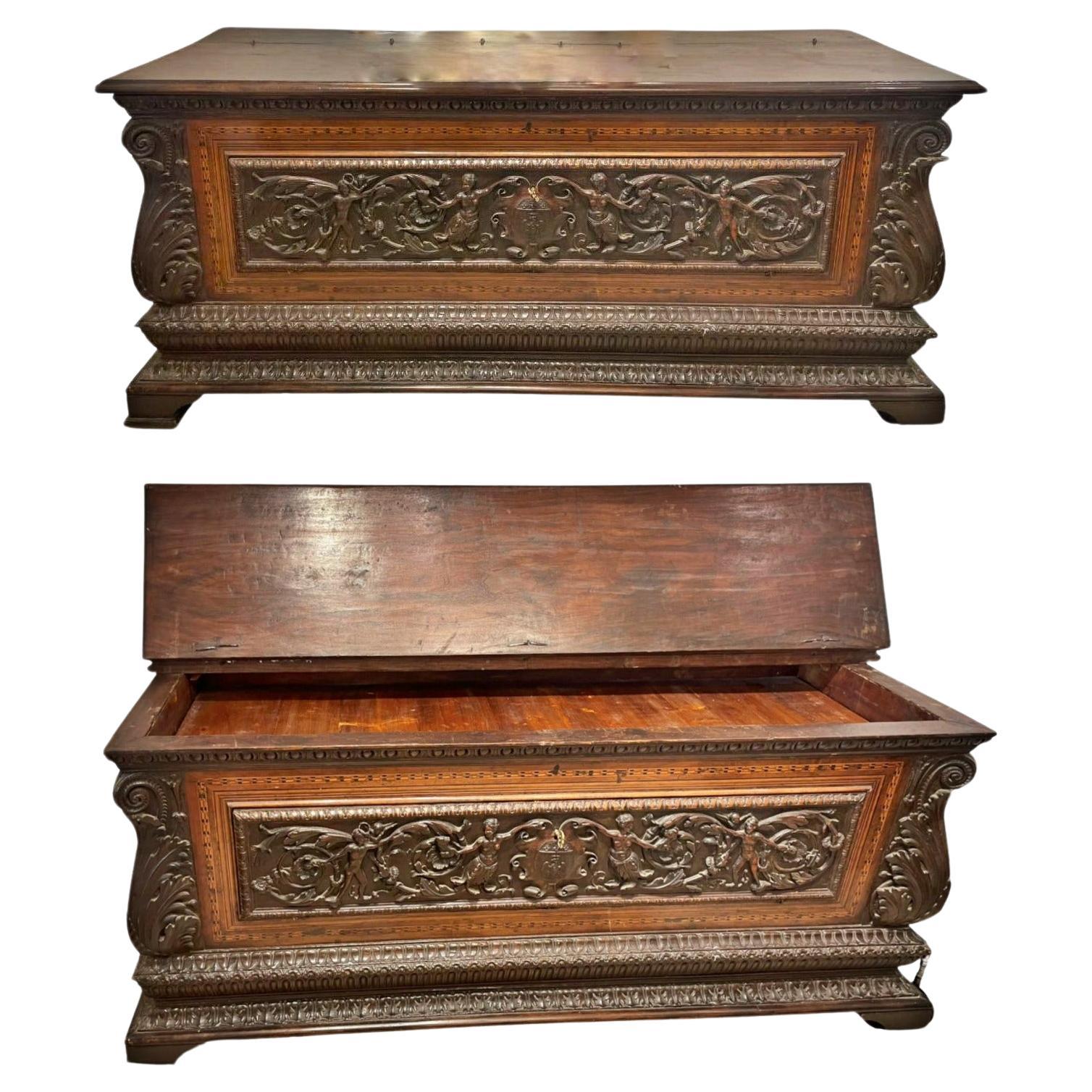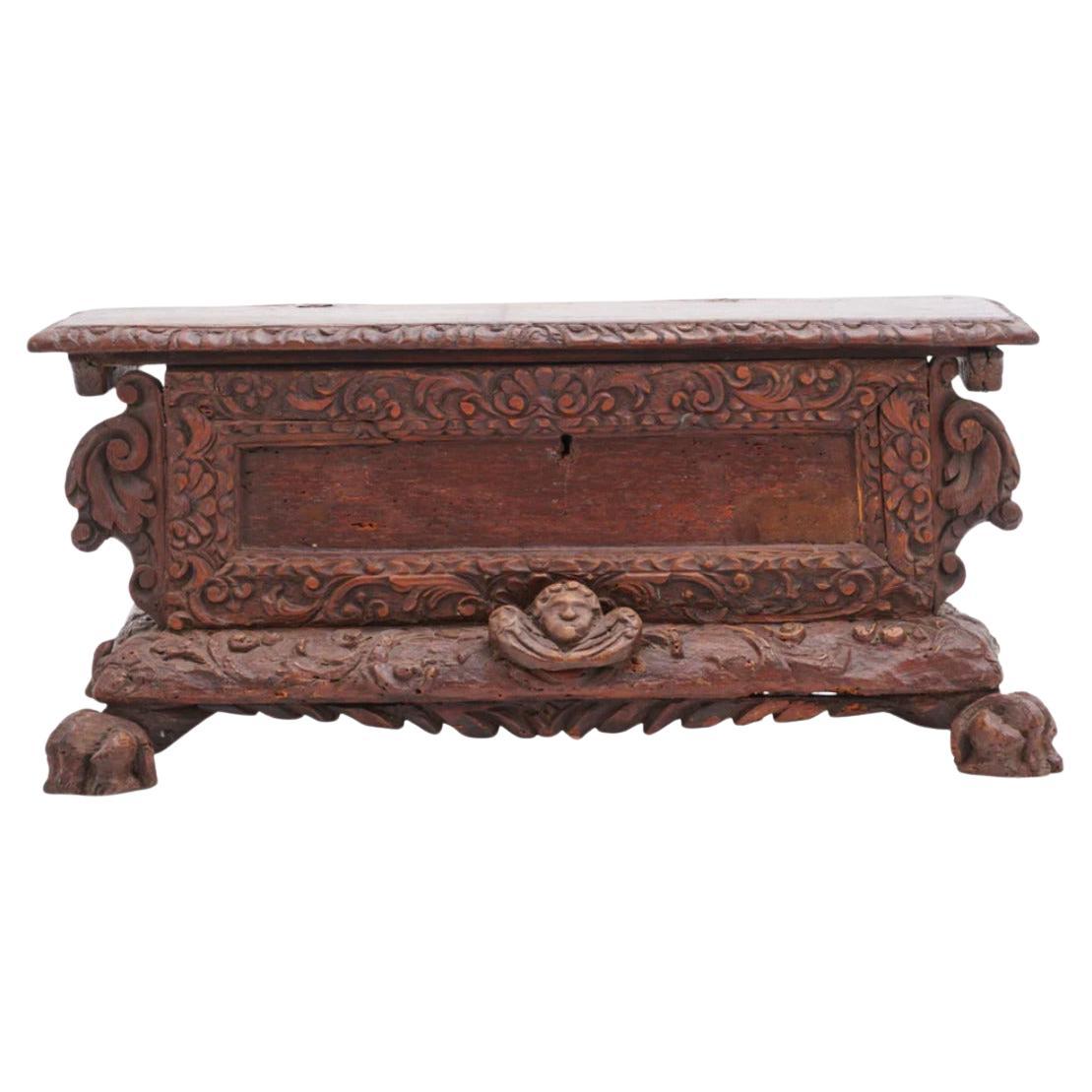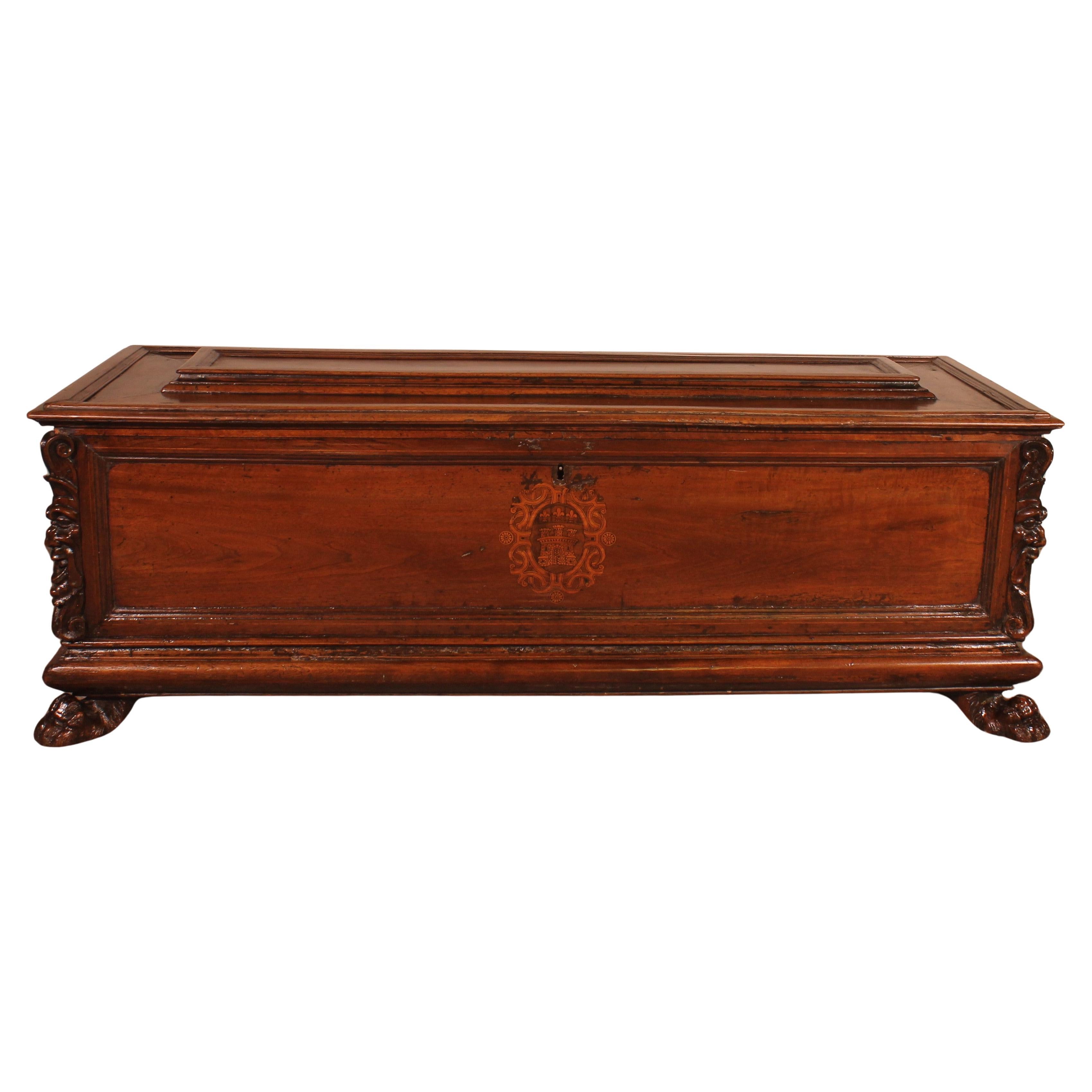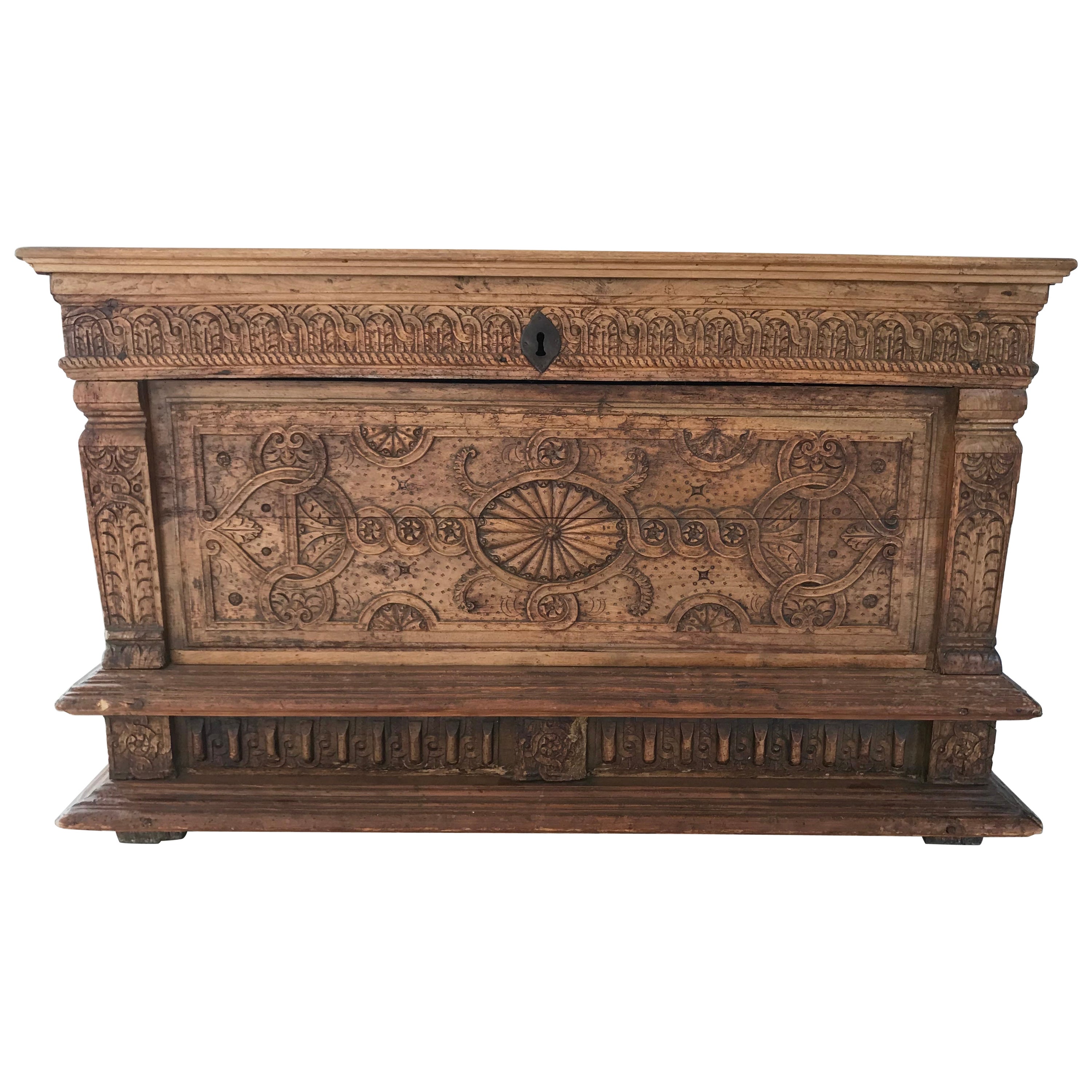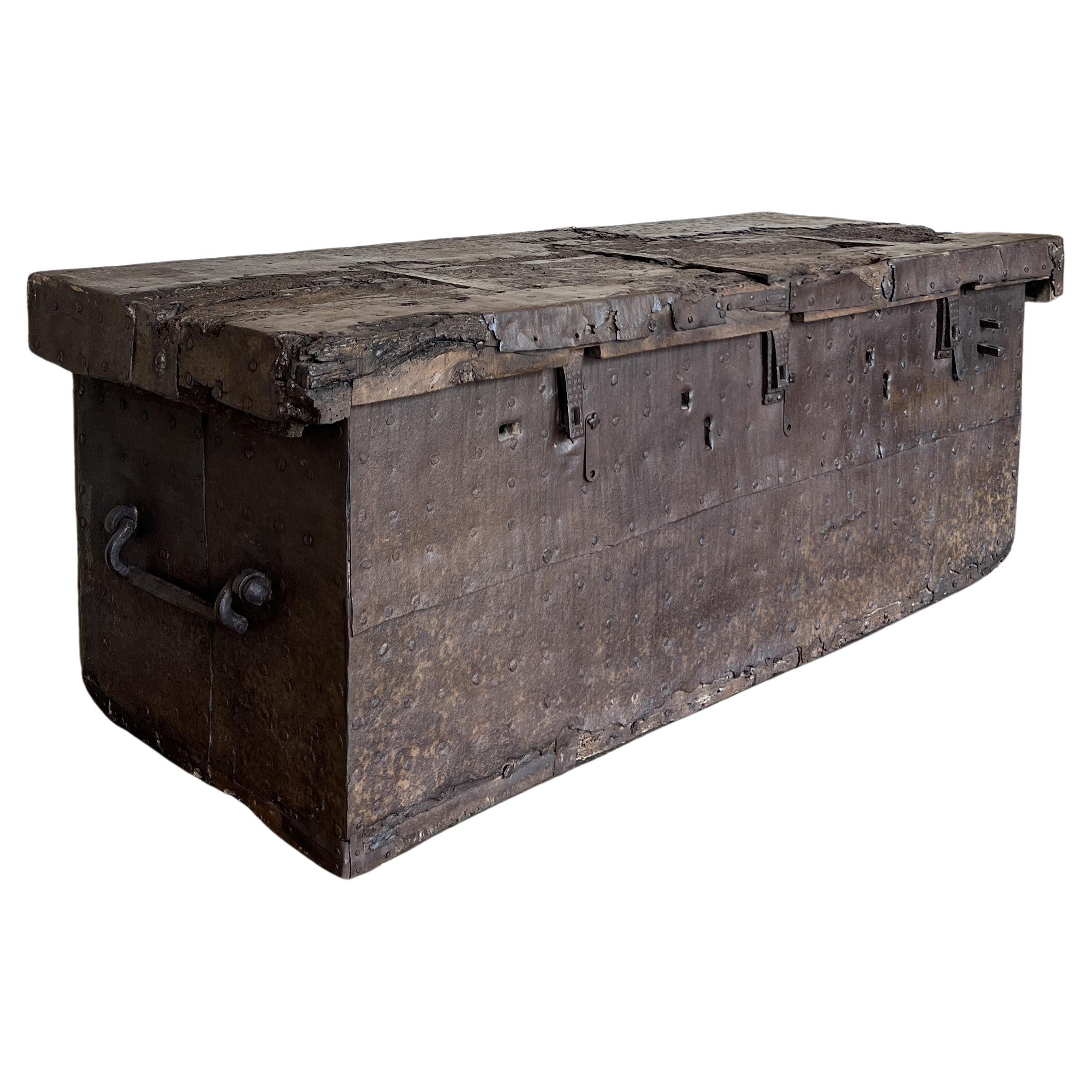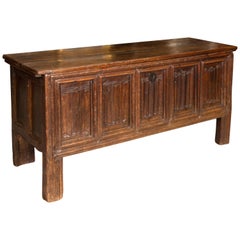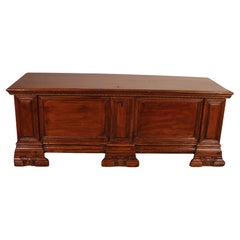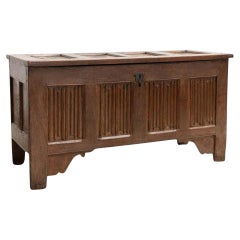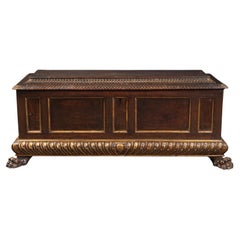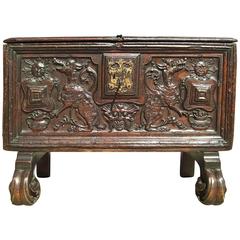
Early 16th Century Spanish Plateresque Chest, Cedar with Boxwood Inlay
View Similar Items
1 of 10
Early 16th Century Spanish Plateresque Chest, Cedar with Boxwood Inlay
$23,500List Price
About the Item
- Dimensions:Height: 24.75 in (62.87 cm)Width: 34.63 in (87.97 cm)Depth: 17.38 in (44.15 cm)
- Style:Renaissance (Of the Period)
- Materials and Techniques:
- Place of Origin:
- Period:
- Date of Manufacture:circa 1500-1530
- Condition:Wear consistent with age and use. Excellent antique condition.
- Seller Location:Santa Fe, NM
- Reference Number:Seller: 55141stDibs: LU280837762423
Authenticity Guarantee
In the unlikely event there’s an issue with an item’s authenticity, contact us within 1 year for a full refund. DetailsMoney-Back Guarantee
If your item is not as described, is damaged in transit, or does not arrive, contact us within 7 days for a full refund. Details24-Hour Cancellation
You have a 24-hour grace period in which to reconsider your purchase, with no questions asked.Vetted Professional Sellers
Our world-class sellers must adhere to strict standards for service and quality, maintaining the integrity of our listings.Price-Match Guarantee
If you find that a seller listed the same item for a lower price elsewhere, we’ll match it.Trusted Global Delivery
Our best-in-class carrier network provides specialized shipping options worldwide, including custom delivery.You May Also Like
16th Century Gothic Chest, Pinewood, Metal
Located in Madrid, ES
The relief of folded cloths was common in the Gothic furniture, coming from Flanders in the 15th century and used in Spain in a common way well into the 16th century, although 17th c...
Category
Antique 16th Century Spanish Renaissance Blanket Chests
Materials
Metal
Italian Renaissance Walnut Chest - 16th Century
Located in Brussels, Brussels
Superb and rare Italian Renaissance chest from the end of the 16th century in walnut
Very beautiful chest with a superb molding work on its face as well as a very beautiful base. Th...
Category
Antique 16th Century Italian Renaissance Blanket Chests
Materials
Walnut
Gothic 16th Century Wood Chest
Located in Barcelona, Barcelona
Gothic oak chest from 16th century with paneled lid and 4 linenfold panels in the front,
circa 1500-1530
From the low countries, (Netherlands).
In good original condition, with min...
Category
Antique 16th Century Dutch Gothic Blanket Chests
Materials
Oak
$8,233 Sale Price
30% Off
Large 16th Century Tuscan Wedding Chest Called "Cassone"
Located in Saint-Ouen, FR
Large wedding chest in tinted and gilded walnut, the lid animated with a frieze of pearls, the sides with compartments, the belt decorated with gadroons. It rests on four claw feets.
Category
Antique 16th Century Italian Renaissance Blanket Chests
Materials
Walnut
16th Century French Renaissance Chest in Carved Oak
Located in Dallas, TX
Whereas many pieces of furniture during the Italian Renaissance were heavily painted or inlaid with decorative motifs, French examples utilized hand-sculpted elements as the predomin...
Category
Antique 16th Century French Renaissance Blanket Chests
Materials
Wood, Oak
Chest or Stollentruhe, Early 16th Century, German Gothic, Oak Chest, Original
Located in BUNGAY, SUFFOLK
This standing chest is of clamp-front construction, extensively decorated with long, ironwork straps with quatrefoil finials which ‘wrap’ around it, and has an ornate, central lockplate, and front legs with full, height stiles. The ironwork straps and finials are fixed with convex, headed nails: running along the front, five long straps; the two side straps; and the five straps on the top. On the chest front, centrally placed, is a large, iron lockplate with four outer, radiating spade finals in each corner and three, superimposed spade finials (a symbol of nobility) which are pierced with the initials ‘BB’. The lockplate receives a corresponding, external hasp fitted to the lid. Below the floor of the chest, the two front stile legs retain most of their original height. The lid is supported by substantial iron strap hinges that extend right down the back of the chest. Inside the chest at the left end is a shallow, oak till.
Construction The chest is of joined, 'clamp-front' construction, reinforced by the nailed, iron mounts. In total it uses ten, oak boards which were riven and planed. The back and front are each formed from a large single plank held to the full height stiles by long, pegged tenons. The sides are also single boards joined into the stiles using long tenons held by dowels, and extend down below the chest bottom, concealing the ends of the bottom boards. The bottom consists of a single board cut into the sides and shallow rebates in the stiles. The front and back boards are dowelled into the bottom boards. The lid which overhangs the sides has a narrow cleat at each end, and consists of one wide plank which has bowed a little as a result of shrinkage.
Ironwork : The wrought ironwork straps, lockplate, hasp and lock all appear all appear to be early, and of the same original manufacture and are fixed with convex headed nails. There is mild dark staining of the oak around the iron mounts, possibly because of low tannin content in the oak.
Length 172 cm., 67 ¾ in., Height 71.5 cm., 28 ¼ in., Depth 63 cm., 24 ¾ in.,
Related to: No 900:2-1904 V&A Museum, London. Stadtmuseum Dusseldorf. Decorative Arts Museum Berlin. Museen Schleswig-Holstein & Hamburg. A related example featuring elaborately-carved feet and formerly in the Horsham Museum, West Sussex, sold at Christie's in 2010 for £97,250 and another example, again with carved feet sold at Sothebys in 2006 for £48,000.
Literature: A similar example is illustrated in H. Lüttgens, Alt- Aachener Wohnkultur; Ein Rundgang durch ein altes Aachener Haus im Wohnstil des 18. Jahrhunderts, Aachen, n.d., ill. 12, and another comparable iron-bound chests...
Category
Antique 16th Century German Gothic Blanket Chests
Materials
Oak
Recently Viewed
View AllMore Ways To Browse
Lane Cedar Chest 1970
Lane Cedar Chest Carved
Antique Cedar Lined Trunk
Burmese Dowry Chest
Highly Carved Asian Blanket Chest
Lane Cedar Trunk
Royal Robe Steamer Trunk
Storage Chests Teakwood Carved
Waterfall Cedar Chest
1940s Lane Cedar Chest
Chinoiserie Wicker Trunk
Lane Cedar Chest 1940
Roos Cedar Chest
Vintage Wheary Suitcase
Chest Becket
Vintage Lane Cedar Chest 1950
Dutch Maids Chest
Antique Canadiana Pine Furniture
